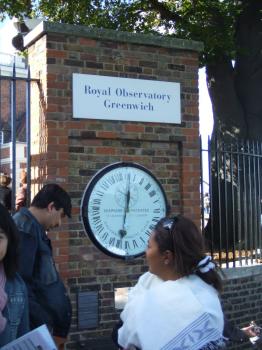We are developing the social individualist meta-context for the future. From the very serious to the extremely frivolous... lets see what is on the mind of the Samizdata people.
Samizdata, derived from Samizdat /n. - a system of clandestine publication of banned literature in the USSR [Russ.,= self-publishing house]
|
I found it via engadget and The Raw Feed, but I might have found it in the Guardian. The Raw Feed reported it this way:
In the belief that the world’s most surveilled society isn’t surveilled enough, eight London cops are getting HEAD-MOUNTED VIDEO CAMERAS to record their run-ins with drunks, soccer hooligans and unrestrained American tourists. The battery-operated cams will record police interactions, and may be used in court.
I do not see this as a problem. But what if the day ever comes when only government employees may use such gadgets? If present trends continue that may become the rule, especially when you consider that in a few short years time, we will be talking about devices that are pretty much invisible.
Next step, having to have a license.
I do not know (I seldom do) whether this is original or not, but it sounds like a very significant achievement, which these people have at least copied and marketed quite well, or, better yet, may actually have semi-invented.
Gizmodo reports:
An amazing innovation in the software world today: ALIPR (Automatic Linguistic Indexing of Pictures) is a program that takes a look at digital images, applies some fancy math and then spits out a list of appropriate tags for the picture. It isn’t perfect, but the designers claim it has a 98 percent accuracy rate. They’ve been letting it dig through Flickr and the software has matched at least one user-defined tag almost every time.
As a constant searcher for photos, I have often found myself exclaiming “I wish you could search pictures!” By that I do not mean merely search the titles and wording that people have attached to pictures. I mean search the actual pictures themselves. It would appear that this process is now well and truly under way.
But, does this stuff have a dark side? How soon before you can take a photo of someone, and say to the internet: Show me all the other photos you can find of this person. You could learn a lot, including quite a few things he might not want you to know. Imagine that kind of thing combined with searching through pictures like these, which I like to take of London tourists.
I have been browsing through John Battelle’s book The Search (no problem finding books on the internet) in recent days, and he has interesting stuff on the privacy-invading potential of this kind of thing. (And oh look, Battelle’s Searchblog reports on something very similar to the ALIPR thing, by the sound of it.)
Oh dear. The original idea of this posting was to be writing about something good, to counter the relentless temptation of those who want the world to get better but cannot help noticing all the ways in which it is getting worse. Never mind. Gizmodo has lots of other stuff like this. (Now you can do your work on one screen, and have crazy pictures on the other.)
As does this blog, which I also recommend. Sample quote:
Women aren’t even trying to pretend they don’t like having sex with robots any more.
More bad news. But the good news is that if you want more pictures along those lines, they just got easier to find.
The advances in robotic vehicles due to the DARPA challenge prizes over the last few years has been nothing short of astounding. I am therefor slack-jawed at the congressional stupidity which has brought about this addition to the DARPA Urban Challenge press release:
UPDATED, October 2, 2006: Congress has changed the Secretary of Defense’s authorities and
DARPA no longer has authority to carry out programs to award cash prizes. Therefore, DARPA
has announced that the top three teams to finish the 60-mile Urban Challenge course in less than
six hours will receive trophies rather than cash prizes. Track B participants will not receive
cash prizes for completing qualifying events, but will be eligible to compete for the trophies to be
awarded in the final event. Track A participants will continue to receive up to $1 million in
technology development funds for achieving key technical milestones.
I presume the problem with prizes is anyone from anywhere can enter and win it. This limits the usual opportunities for congressional corruption, or as I like to think of it, “Stevensing” (as in Ted Stevens, the Alaskan Ubercrook).
I do hope some sanity breaks out in the Washington asylum. There are other Grand Challenges going on which have been generating simply amazing results.
Tim Blair links to a critique of the ubiquitous Stern Report, written by Bjørn Lomborg. Perhaps his most damning (and least surprising) criticism of the Report is that it is “unrealistically pessimistic”, and considering its wholesale adoption by the Green lobby, I have no doubt that this is true. The article is well worth a read as an antidote to all the hand-wringing the Stern Report’s tabling has inspired. However, Lomborg’s rejoinder only receives two cheers from me.
Whilst Lomborg’s most famous publication – The Skeptical Environmentalist – was enormously refreshing, I found many of his remedies to the world’s problems uncomfortable. He really seems to believe that solving these crises is as simple as throwing a pre-determined mega-amount of cash at them – x billion dollars here will provide clean drinking water for those who currently have no access to it, x billion dollars there will defeat malaria. In this latest article of Lomborg’s, he ambitiously declares that all of the major problems of the poverty-stricken world can be solved by spending x billion dollars per year, claiming:
Spending just a fraction of this figure [$450 billion p.a. to cut carbon emissions, as recommended by Stern – JW] – $75 billion – the U.N. estimates that we could solve all the world’s major basic problems. We could give everyone clean drinking water, sanitation, basic health care and education right now.
Really? Who is going to disperse this cash, and how? Lomborg does not say, but such a project has the State’s fingerprints all over it. Where else could Lomborg expect to get this sort of sustained funding from? Only an entity with the coercive power to extract resources from countless others would be able to volunteer a sum like 75 billion dollars year in, year out. Are we talking about government – or a coalition of governments? Of course we are! Surely only governments (or an intergovernmental body like the U.N.) are trustworthy enough to distribute such a volume of resources fairly and efficiently. Only governments would utilise these resources in the single-minded purpose of lightening the burden of the world’s poor, unadulterated by the agenda of other forces. An organic, non-governmental response is simply not organised; not holistic enough. Consider how well large-scale state planning has served us this past century or so.
Not buying it?
Well, I think we can all agree that the record of government and the U.N. in the field of aid distribution and poverty alleviation is really quite something. So whilst Lomborg is a useful resource if one is hosing down the wilder claims of the Global Climate Change mullahs, his obvious faith in government action should remind all liberals that he is not one of us. His solutions to the world’s problems are ultimately as futile as those proposed by the environmental industry, although Mr Lomborg’s are admittedly rather less demanding on the wallets of long-suffering taxpayers.
Great article by Brendan O’Neill on the attempts – vain, I hope – to silence folk who dare contest the Truth of Global Warming.
Right, it is Friday evening, I have a life, so have a good weekend and try not to think about English football.
Tom Clougherty, the new face at the Globalisation Institute, linked earlier today to a fascinating Wired piece about a new way of extracting drinkable water from “thin air”.
Clougherty is wise enough to use the phrase “If reports are to be believed” when talking about the huge benefits that this invention might have. So, the question is: will it work?
It being, approximately, and give or take a big dollop of industrial (and presumably military) secrecy this:
“People have been trying to figure out how to do this for years, and we just came out of left field in response to Darpa,” said Abe Sher, chief executive officer of Aqua Sciences. “The atmosphere is a river full of water, even in the desert. It won’t work absolutely everywhere, but it works virtually everywhere.”
Sher said he is “not at liberty” to disclose details of the government contracts, except that Aqua Sciences won two highly competitive bids with “some very sophisticated companies.”
He also declined to comment on how the technology actually works.
“This is our secret sauce,” Sher said. “Like Kentucky Fried Chicken, it tastes good, but we won’t tell you what’s in it.”
He did, however, provide a hint: Think of rice used in saltshakers that acts as a magnet to extract water and keeps salt from clumping.
“We figured out how to tap it in a very unique and proprietary way,” Sher said. “We figured out how to mimic nature, using natural salt to extract water and act as a natural decontamination.
“Think of the Dead Sea, where nothing grows around it because the salt dehydrates everything. It’s kind of like that.”
The 20-foot machine can churn out 600 gallons of water a day without using or producing toxic materials and byproducts. The machine was displayed on Capitol Hill last week where a half-dozen lawmakers and some staffers stopped by for a drink.
More about this at engadget, where there is comment on the same Wired piece.
Do any of our more tech-savvy commenters have any other news concerning this apparently wondrous gizmo, or any opinions about whether such a thing is, in principle, likely to work?
I do not as yet know a great deal about this. It appears that some company has managed a court order requiring the domain name for spamhaus.org to be taken down.
Spamhaus.org are one of the better anti-spam sites and supply an excellent real time blocking list to anyone who wants it. Their service has been free and voluntary and much appreciated by many harried network system administrators, among whose ranks I have from time to time been included.
I know nothing about this ‘Ensight’ but I can think of no reason for a legal attack on the Spamhaus folk other than as a means of stopping the information about your current spam hosts from getting distributed to all those who voluntarily wish to block you.
Whether Ensight is or is not run by a bunch of spammers I do not know. If anyone has any more information on the events leading up to the court order, feel free to comment.
In the days before accurate timekeeping, determining your longitude was an extremely difficult task, requiring extremely accurate timekeeping. The British Admiralty expended enormous resources and considerable sums of money on the problem until it was solved by John Harrison in 1761. These days, we just turn on electronic devices and communicate with satellites.

This is particularly useful when, as this afternoon, one is in a place where one couldn’t possibly discover the longitude any other way.

The Royal Greenwich Observatory no longer exists as an institution, having been abolished in 1998 (after moving its last astronomical faclities away from Greenwich in 1957), and the observatory buildings are today part of the National Maritime Museum, which has its main facilities in the former Greenwich Hospital buildings at the bottom of the hill below the observatory. I provide a picture merely because the view is nice.


Alas, the statue at the top of the hill does not seem right. The statue is of General James Wolfe, who captured Quebec City for the British in 1754. Whilst I do not begrudge Gen. Wolfe his statue, it seems wrong, for two reasons. Firstly, why is the statue in pride of place in Greenwich, a place of great maritime heritage, a General rather than an Admiral. Secondly, given the history of the place, there is another figure who to me should be the man standing there. → Continue reading: Satellite navigation is a wonderful thing
Introducing the world’s grooviest washing machine. Mind you, ironing is still going to be a chore. (Hat-tip: Gizmondo).
I quite like iTunes, finding the ‘look and feel’ better than any other music players for both my Mac and PC… however I made the mistake of upgrading to iTunes 7 the other day and found its ugly, laggy and above all the sound quality was dire with crackling and buzzing sounds clearly audible.
Looking on the internet I see I am far from the only person this has happened to. How Apple could release such a pox ridden piece of software is a marvel. Avoid at all costs until it is well and truly patched. I have gone back to the previous version with which I am entirely happy and will probably stick with it for some time now unless I can find an alternative player that I like.
The journey from environmentalism to sanity may not be so far after all:
The World Health Organization (WHO) has reversed a 30-year policy by endorsing the use of DDT for malaria control.
The chemical is sprayed inside houses to kill malaria-carrying mosquitoes.
And about bloody time too! The prohibition of DTT was a product of wrong-headed, fashionable green dogma and Lord only knows how many people in the developing world have paid for it with their lives. Just how many neural transmitters do you have shut down in order to hand-wring about poverty and premature death in the developing world while simultaneously campaigning against everything and anything that stands a chance of tackling them?
I sincerely hope that the greenslimers are seething with thwarted rage. In fact, I hope their blood boils until they have a collective stroke. I wish a pox on them (before they unleash a pox on the rest of us).
Exxonmobil is a global vandal. They’ve invested millions of dollars in to trying to confuse the public and muddy the science on climate change.
– Don Henry, Australian Conservation Foundation
|
Who Are We? The Samizdata people are a bunch of sinister and heavily armed globalist illuminati who seek to infect the entire world with the values of personal liberty and several property. Amongst our many crimes is a sense of humour and the intermittent use of British spelling.
We are also a varied group made up of social individualists, classical liberals, whigs, libertarians, extropians, futurists, ‘Porcupines’, Karl Popper fetishists, recovering neo-conservatives, crazed Ayn Rand worshipers, over-caffeinated Virginia Postrel devotees, witty Frédéric Bastiat wannabes, cypherpunks, minarchists, kritarchists and wild-eyed anarcho-capitalists from Britain, North America, Australia and Europe.
|



